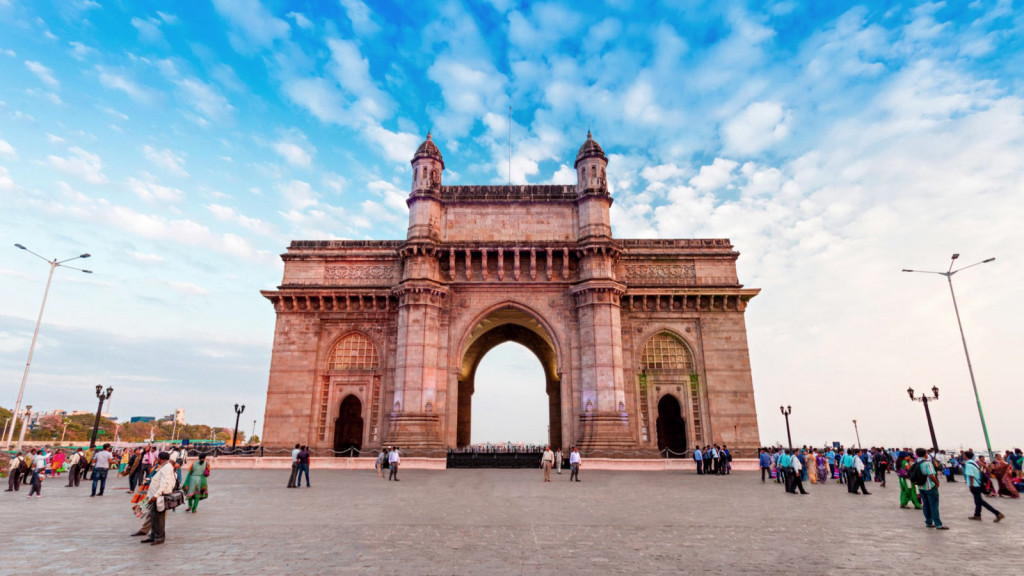Unveiling the Beauty of Indo-Saracenic Architecture
Indo-Saracenic architecture is a special and spellbinding mix of Indian and Islamic compositional styles. It arose in the nineteenth 100 years under English provincial rule and thrived until the mid twentieth hundred years. Indo-Saracenic Architectures are described by their fancy subtleties, mind boggling carvings, and superb vaults. They stand as a demonstration of the rich social legacy of India and the combination of different compositional practices.
Historical Significance and Origins
The English provincial government in India looked to make another building style that would mirror the country’s assorted social legacy. They appointed English modelers to plan structures that consolidated components of Indian and Islamic architecture. This prompted the advancement of Indo-Saracenic architecture, which immediately became famous for public structures, for example, rail line stations, courts, and galleries.
The Fusion of Styles – Indo-Saracenic Architecture
Understanding the Blend of Cultures
Indo-Saracenic architecture is a unique fusion of Indian and Islamic architectural styles. It incorporates elements from both cultures, such as domes, arches, and jalis. Indo-Saracenic buildings are often characterized by their ornate details and intricate carvings.
Influences of Indo-Aryan and Islamic Architecture
Indo-Saracenic architecture has been influenced by both Indo-Aryan and Islamic architecture. Indo-Aryan architecture is described by its utilization of points of support, shafts, and lintels. Islamic architecture, then again, is portrayed by its utilization of curves, vaults, and minarets. Indo-Saracenic architecture mixes components from both these styles to make an interesting and dazzling style.

Key Characteristics – Indo-Saracenic Architecture
Architectural Elements
Indo-Saracenic architecture is characterized by a number of key architectural elements, including:
- Domes: Domes are a prominent feature of Indo-Saracenic architecture. They are often onion-shaped or bulbous in form.
- Arches: Arches are another important element of Indo-Saracenic architecture. They are typically pointed or cusped in shape.
- Minarets: Minarets are tall, slender towers that are often found at the corners of Indo-Saracenic buildings. They are often topped with domes or spires.
- Jalis: Jalis are openwork screens that are made of stone, wood, or metal. They are often used to decorate windows and balconies.
- Chhajja: Chhajjas are overhanging eaves that are often supported by conspicuous brackets. They provide shade and protection from the elements.
Ornate Details and Decorations
Indo-Saracenic structures are known for their luxurious subtleties and improvements. These improvements can be tracked down on the exteriors, insides, and, surprisingly, the tops of these structures. Normal brightening themes incorporate mathematical examples, flower plans, and calligraphic engravings.
Role of Geometry in architecture
Geometry plays an important role in the architecture of Indo-Saracenic architecture. Geometric patterns are often used to decorate the facades and interiors of these buildings. These patterns can be complex and intricate, and they often reflect the Islamic tradition of geometric art.
Iconic Structures – Indo-Saracenic Architecture
Taj Mahal: A Symbol of Indo-Saracenic Grandeur
The Taj Mahal is one of the most notable instances of Indo-Saracenic architecture. A white marble tomb was worked by Mughal sovereign Shah Jahan in memory of his darling spouse, Mumtaz Mahal. The Taj Mahal is known for its dazzling magnificence and evenness. Being a work of art of Indo-Saracenic architecture is thought of.
Mysore Palace: A Royal Showcase
The Taj Mahal is one of the most notable instances of Indo-Saracenic architecture. A white marble tomb was worked by Mughal sovereign Shah Jahan in memory of his darling spouse, Mumtaz Mahal. The Taj Mahal is known for its dazzling magnificence and evenness. Being a work of art of Indo-Saracenic architecture is thought of.
Victoria Memorial: A Blend of Cultures
The Victoria Dedication is a white marble constructing that was inherent memory of Sovereign Victoria. It is situated in Kolkata, West Bengal. The Victoria Dedication is a mix of Indo-Saracenic and Venetian Gothic building styles. It is known for its fantastic extents, resplendent exteriors, and delightful nurseries.
Charminar: The Icon of Hyderabad
The Charminar is a four-minaret mosque that was underlying the sixteenth hundred years by the Qutb Shahi line. It is situated in Hyderabad, Telangana. The Charminar is quite possibly of the most notorious milestone in India. It is known for its four minarets, which are each 180 feet tall.
Regional Variations – Indo-Saracenic Architecture
Indo-Saracenic in Northern India
Indo-Saracenic architecture developed in northern India, where it was influenced by the Mughal architectural tradition. Mughal architecture is portrayed by its utilization of white marble, red sandstone, and multifaceted carvings. Indo-Saracenic structures in northern India frequently consolidate these components, as well as other Mughal architecture highlights, like vaults, curves, and minarets.
A portion of the eminent instances of Indo-Saracenic architecture in northern India include:
- Red Stronghold: The Red Stronghold is an UNESCO World Legacy Site that was worked by the Mughal head Shah Jahan in the seventeenth 100 years. It is known for its red sandstone walls and multifaceted carvings.
- Jama Masjid: The Jama Masjid is perhaps of the best mosque in India. It was worked by the Mughal head Shah Jahan in the seventeenth hundred years. The Jama Masjid is known for its fabulous degrees and complex carvings.
- Humayun’s Internment chamber: Humayun’s Entombment place is the internment spot of the Mughal ruler Humayun.It was worked by his better half, Hamida Banu Begum, in the sixteenth 100 years. Humayun’s Burial chamber is known for its white marble façade and perplexing carvings.
Southern India’s Unique Interpretation
Indo-Saracenic architecture additionally created in southern India, where it was affected by the Dravidian compositional practice. Dravidian architecture is described by its utilization of transcending gopurams, unpredictable carvings, and brilliantly shaded walls. Indo-Saracenic structures in southern India frequently consolidate these components, as well as other Dravidian building highlights, like support points, pillars, and lintels.
A portion of the prominent instances of Indo-Saracenic architecture in southern India include:
- Chettinad Royal residences: The Chettinad Royal residences are a progression of palatial manors that were worked by well off Chettiar vendors in the nineteenth and mid twentieth hundreds of years. The Chettinad Royal residences are known for their luxurious exteriors, multifaceted carvings, and brilliantly shaded walls.
- Mysore Royal residence: The Mysore Castle is the previous illustrious home of the Wodeyars, the leaders of the Mysore Realm. The Mysore Royal residence is known for its excellent extents, elaborate exteriors, and extravagant insides. It is one of the most famous vacation destinations in India.
- Tirumalai Nayak Castle: The Tirumalai Nayak Castle is a seventeenth century royal residence that was worked by the Nayak line. It is known for its fantastic extents, resplendent veneers, and delightful nurseries.

Influence in Western and Eastern Regions
Indo-Saracenic architecture also had an influence on the western and eastern regions of India. In the western region, Indo-Saracenic architecture was influenced by the Gujarati architectural tradition. Gujarati architecture is characterized by its use of intricate carvings, jali screens, and wooden balconies. Indo-Saracenic structures in the western district frequently consolidate these components, as well as other Gujarati architecture highlights, like vaults, curves, and minarets.
In the eastern locale, Indo-Saracenic architecture was affected by the Bengali structural custom. Bengali architecture is characterized by its use of curved roofs, domed chhatri kiosks, and pinnacles. Indo-Saracenic structures in the western district frequently consolidate these components, as well as other Gujarati architecture highlights, like vaults, curves, and minarets.
In the eastern locale, Indo-Saracenic architecture was affected by the Bengali structural custom.
- Chhatrapati Shivaji Maharaj End: The Chhatrapati Shivaji Maharaj End (previously Victoria End) is an UNESCO World Legacy Site in Mumbai, Maharashtra. It was inherent the late nineteenth 100 years and is a mix of Indo-Saracenic and Gothic Restoration compositional styles. The Chhatrapati Shivaji Maharaj End is known for its fantastic extents, elaborate veneers, and wonderful nurseries.
- Howrah Scaffold: The Howrah Extension is a cantilever span that traverses the Hooghly Waterway in Kolkata, West Bengal. It was underlying the late nineteenth 100 years and is a mix of Indo-Saracenic and Victorian structural styles. The Howrah Extension is known for its amazing extents and many-sided carvings.
- Gol Dak Khana: The Gol Dak Khana (Round House) is a 17th-century octagonal building in Kolkata, West Bengal. It was built by the Mughal emperor Shah Jahan and is a blend of Indo-Saracenic and Mughal architectural styles. The Gol Dak Khana is known for its intricate carvings and beautiful gardens.
Summary of Indo-Saracenic Architecture
Indo-Saracenic architecture is a remarkable and wonderful mix of Indian and Islamic structural styles. It created in the nineteenth 100 years under English pilgrim rule and prospered until the mid twentieth hundred years. Indo-Saracenic structures are described by their luxurious subtleties, many-sided carvings, and superb vaults. They stand as a demonstration of the rich social legacy of India and the combination of different architecture customs.
Key Takeaways
- Indo-Saracenic architecture is an extraordinary mix of Indian and Islamic architecture styles.
- It created in the nineteenth 100 years under English frontier rule and prospered until the mid twentieth 100 years.
- Indo-Saracenic structures are described by their lavish subtleties, multifaceted carvings, and magnificent vaults.
- Indo-Saracenic architecture assumed a critical part in the improvement of current Indian architecture.
- Indo-Saracenic structures in India face various difficulties, including natural variables, metropolitan turn of events and modernization, and absence of mindfulness and appreciation.
FAQS
What is Indo-Saracenic architecture?
Indo-Saracenic architecture is a style that arose in the nineteenth hundred years during the English frontier rule in India. It is a mix of Indian, Islamic, and European structural components, portrayed by unpredictable craftsmanship, vaults, minarets, and curves. This combination style became unmistakable in open structures, royal residences, and mosques across the Indian subcontinent.
How did the Indo-Saracenic style originate?
The Indo-Saracenic style was born out of cultural amalgamation. During the British Raj, British architects in India were inspired by the architectural splendors of Mughal, Indo-Islamic, and Hindu styles. They integrated these diverse elements into their architectures, giving birth to the Indo-Saracenic style.
What are the key features of Indo-Saracenic architecture?
The key features of Indo-Saracenic architecture include bulbous domes, slender minarets, horseshoe arches, intricate carvings, and stained glass windows. It often incorporates Indian architectural elements like chhatris (domed pavilions) and jalis (perforated screens), alongside Islamic arches and decorative motifs.

